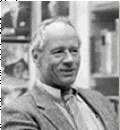A college student in the march from Selma to Montgomery recalls the struggle for democracy in Alabama in 1965.
Written while he was jailed for leading nonviolent demonstrations, King's open letter defined the Civil Rights movement.
Editor's Note: Bruce Watson is a Contributing Editor of American Heritage and has authored several critically-acclaimed books. He writes a history blog at The Attic.
The modern version of an African-American spiritual has helped draw together people who are fighting for justice.
At
During demonstrations in Birmingham, Martin Luther King Jr. took perhaps the most fateful decision made during the civil rights era.
What would Martin Luther King Jr.—had he been alive today—thought of our latest president’s oratory?
King gave his “
Suppose they could go on "Meet The Press"...
The Montgomery Bus Boycott and its legacy
December 1, 1955, was a cool, drizzly night in Montgomery. James F. Blake, a veteran of World War II and a veteran bus driver, was maneuvering the bus he normally took on the Montgomery Avenue route through downtown toward Cleveland Avenue on the city’s west side.
This is a journalist’s list. My reading (and knowledge) is greatly influenced by the events of the day, the time, the era. My reading and my work are often one and the same. That is one of the best things about being a writer, but it may not be ideal for list-making.
In his kaleidoscopic novel U.S.A., a trilogy published between 1930 and 1936, John Dos Passos offered a descriptive line that has always stayed with me.
The English journalist has spent more than a decade preparing a book on this country’s role in the most eventful hundred years since the race began. He liked what he found enough to become an American himself.
Deep South states are taking the lead in promoting landmarks of a 300-year heritage of oppression and triumph, and they’re drawing visitors from around the world.
Kate is waiting for us by the kitchen garden. Her owner, Benjamin Powell, has warned us that she “often has a case of the grumps,” so we approach her cautiously.
A century after passage of the Fifteenth Amendment, many Southern blacks still were denied the vote. In 1965 Martin Luther King, Jr, set out to change that—by marching through the heart of Alabama.
From the frozen steps of Brown Chapel they could see the car moving toward them down Sylvan Street, past the clapboard homes and bleak, red-brick apartments that dotted the Negro section of Selma, Alabama.
Here is the federal government’s own picture history of our times—and it tells us more than you might think
FEW ARE AWARE of a major publishing project that has been sponsored by the federal government and some of our leading citizens over the past eight decades.
As this issue goes to press, Governor George Wallace of Alabama lies gravely wounded by bullets fired from the handgun of a would-be assassin while he was campaigning for the Presidential nomination in Maryland.
When one weary woman refused to be harassed out of her seat in the bus, the whole shaky edifice of Jim Crow began to totter
In 1955,





